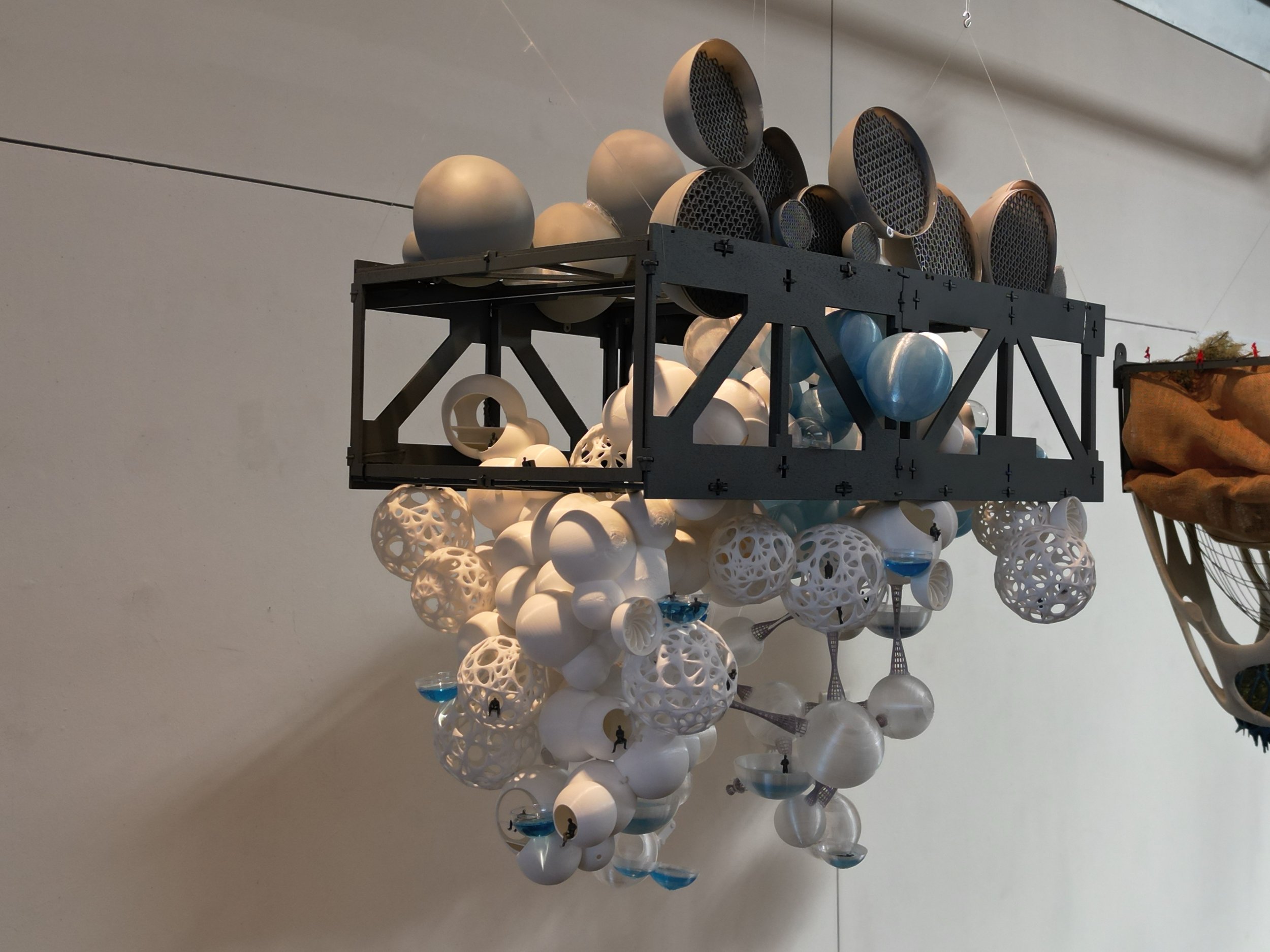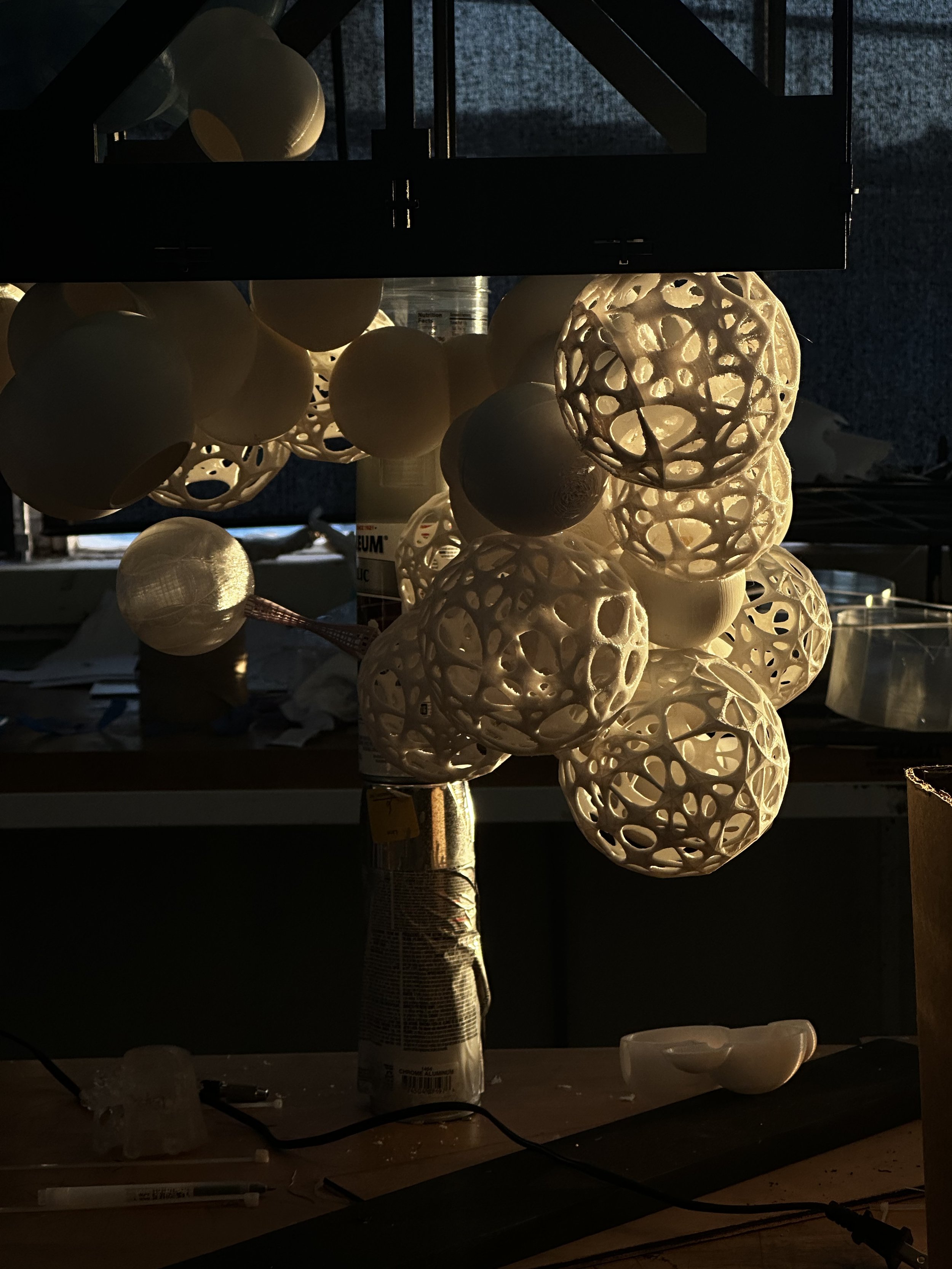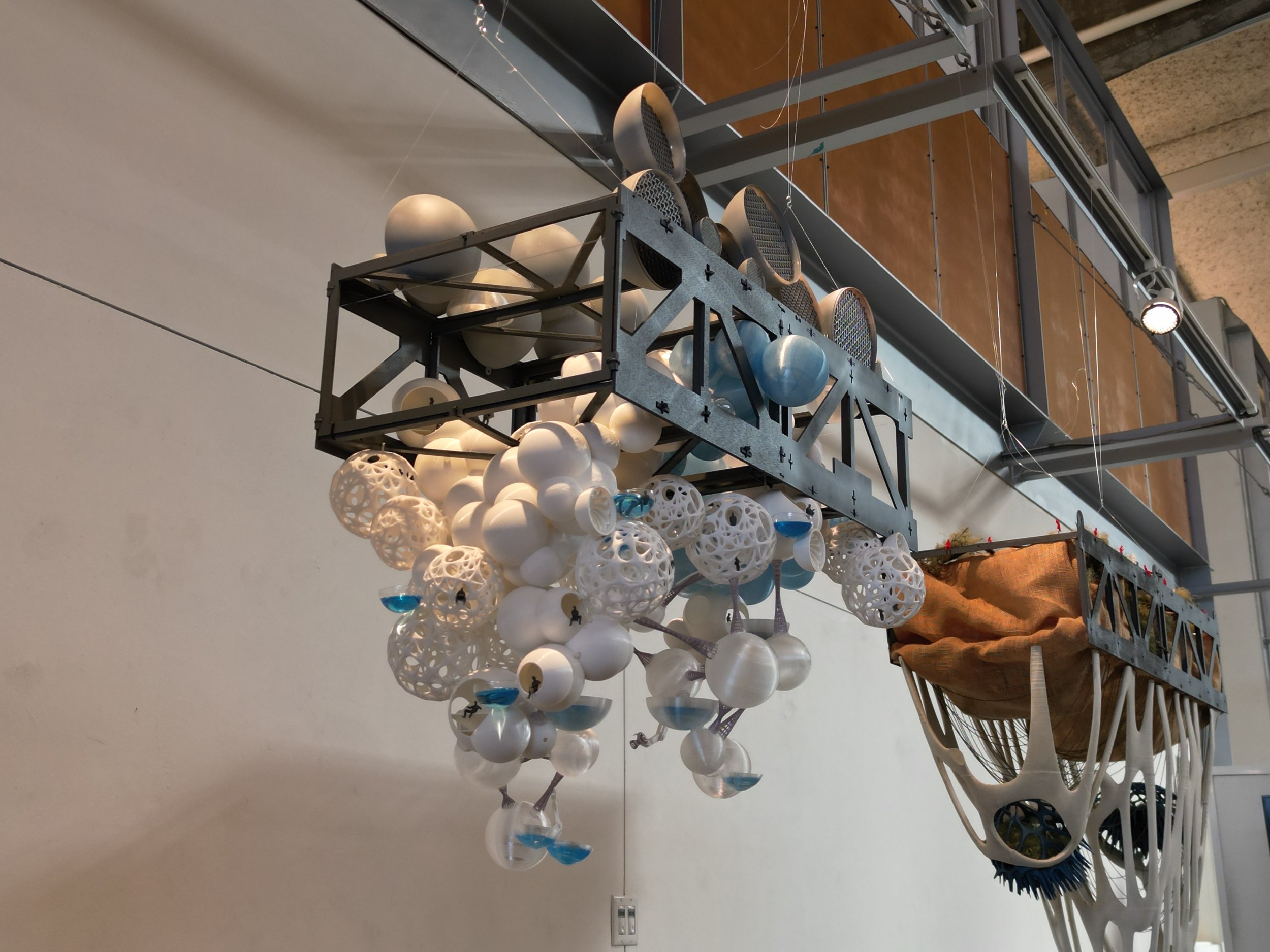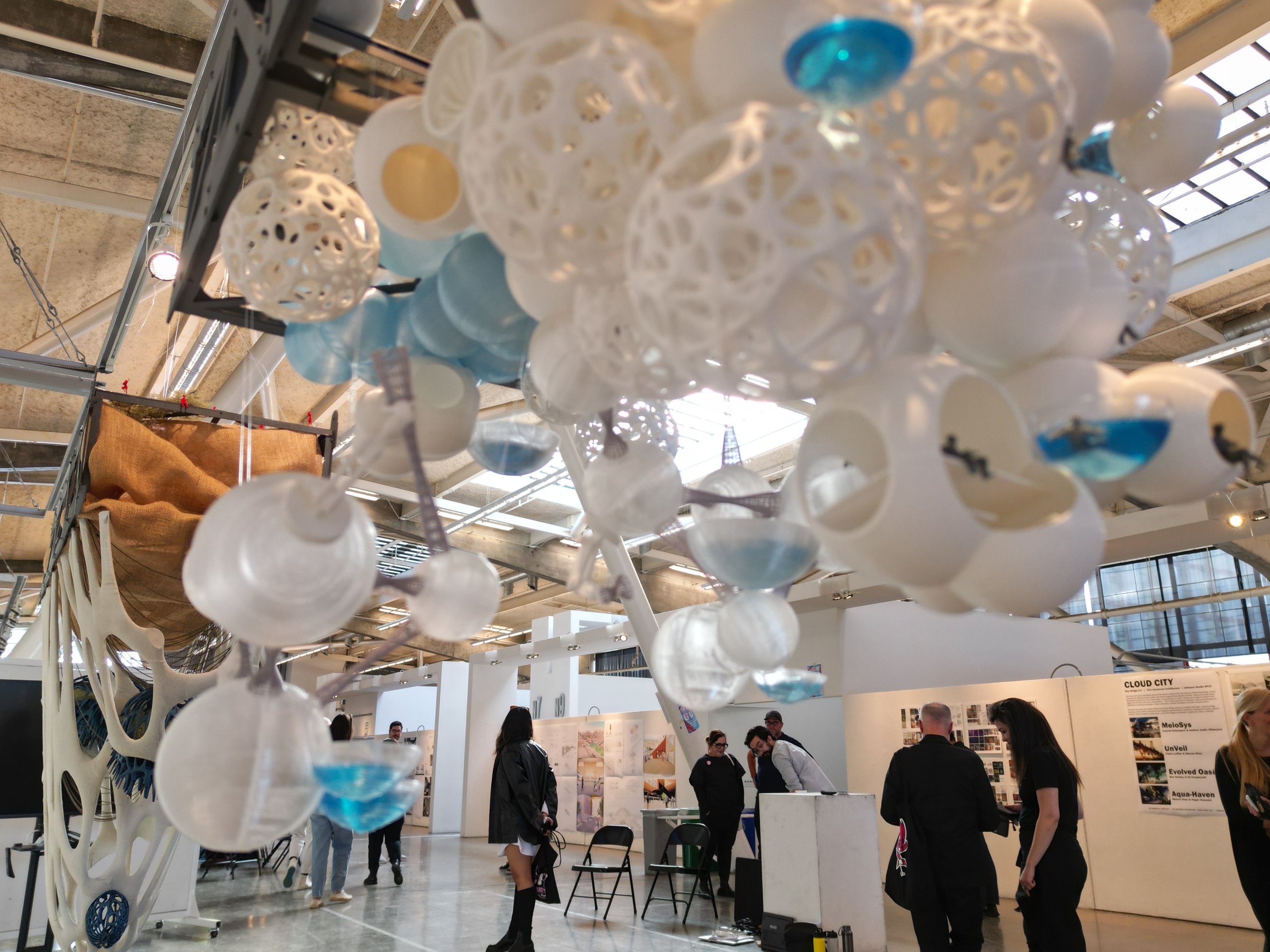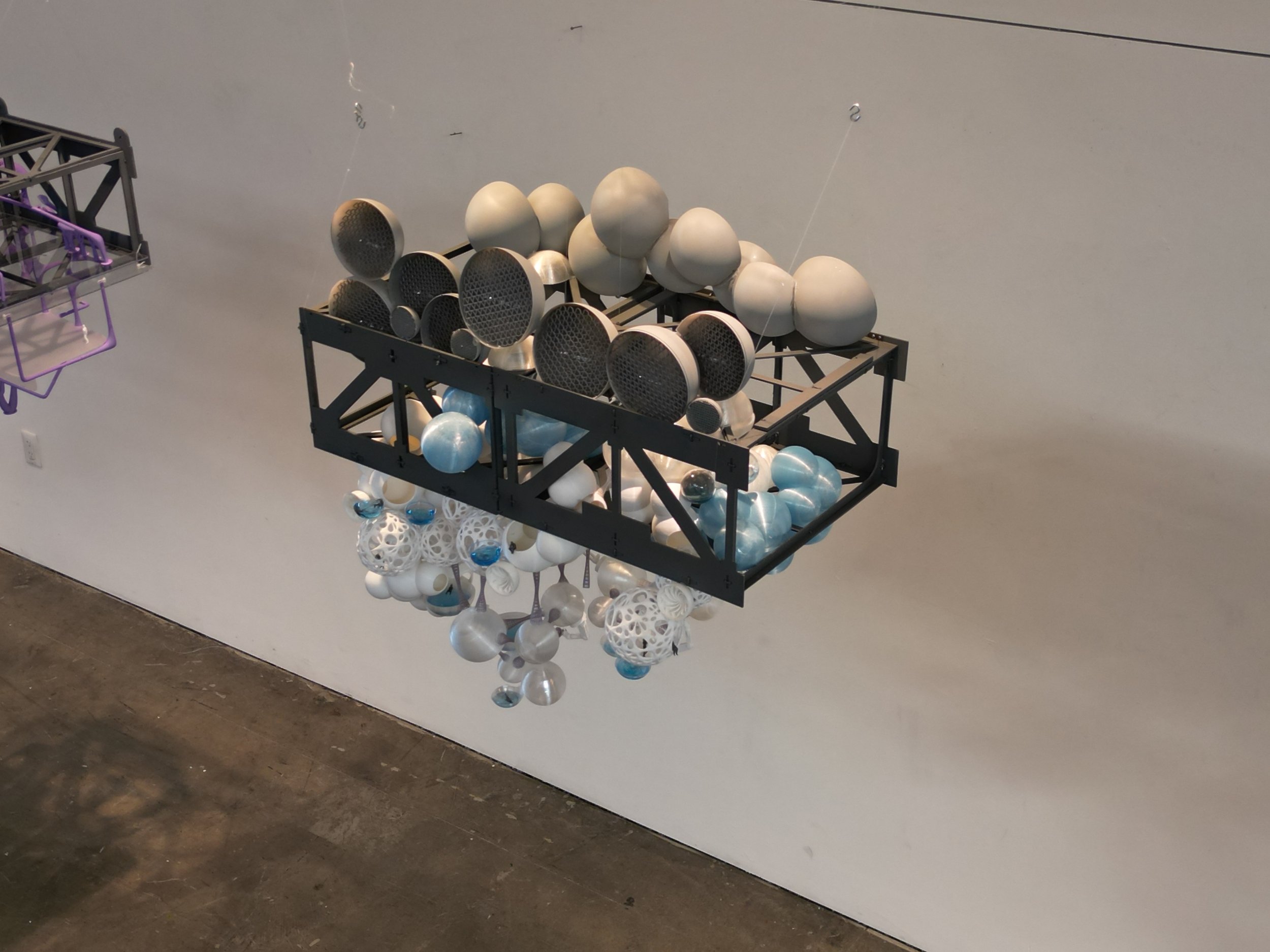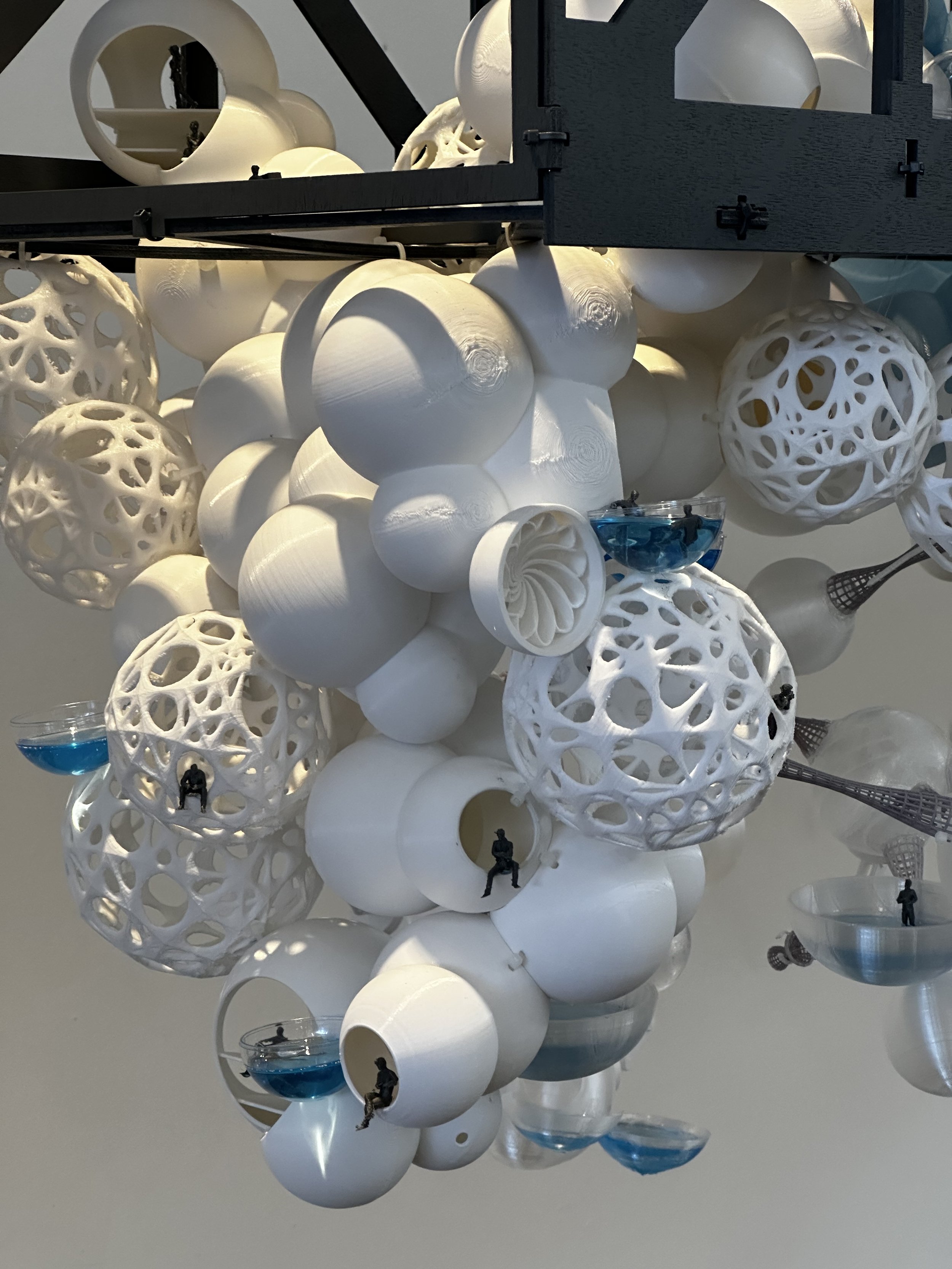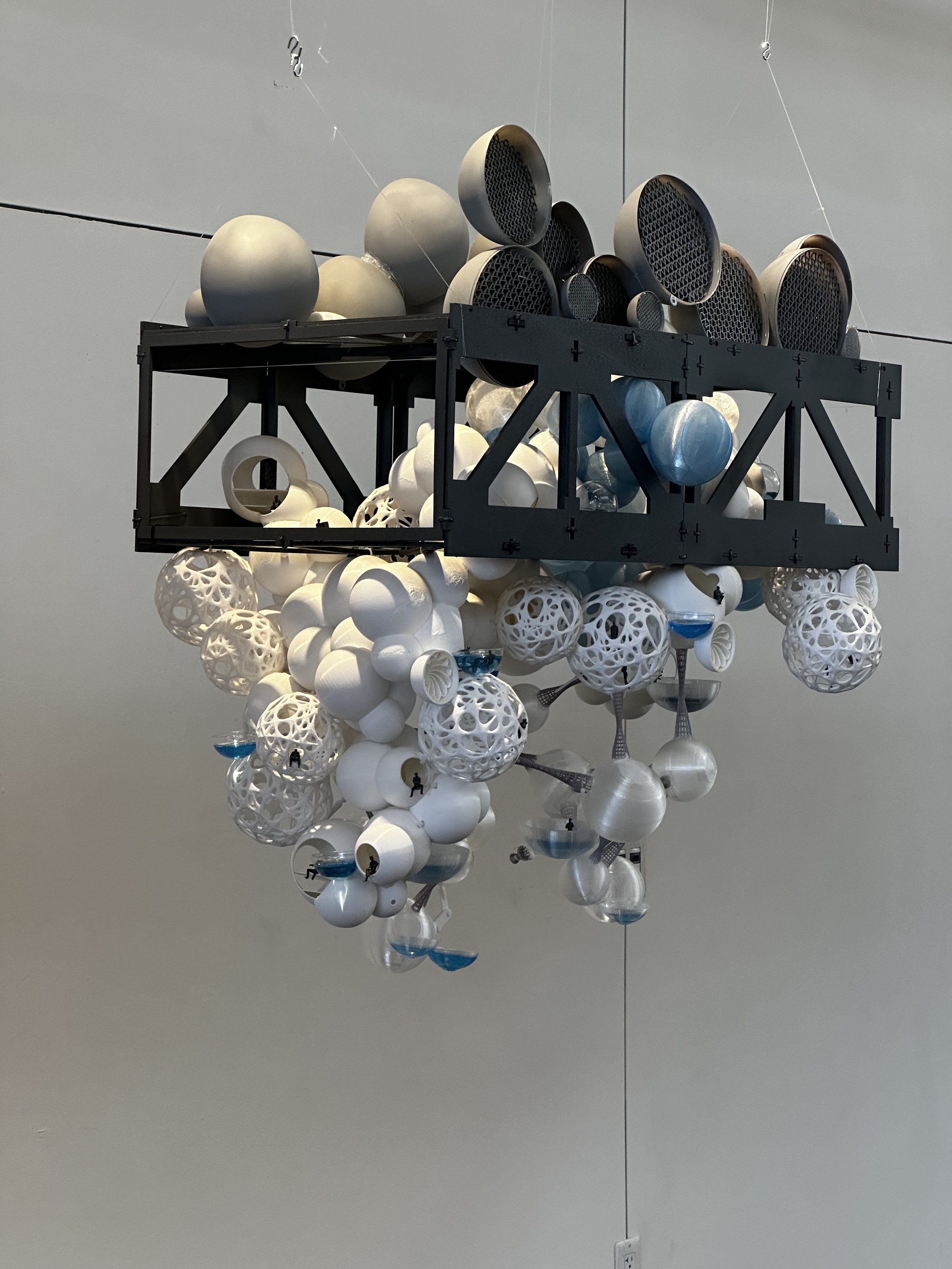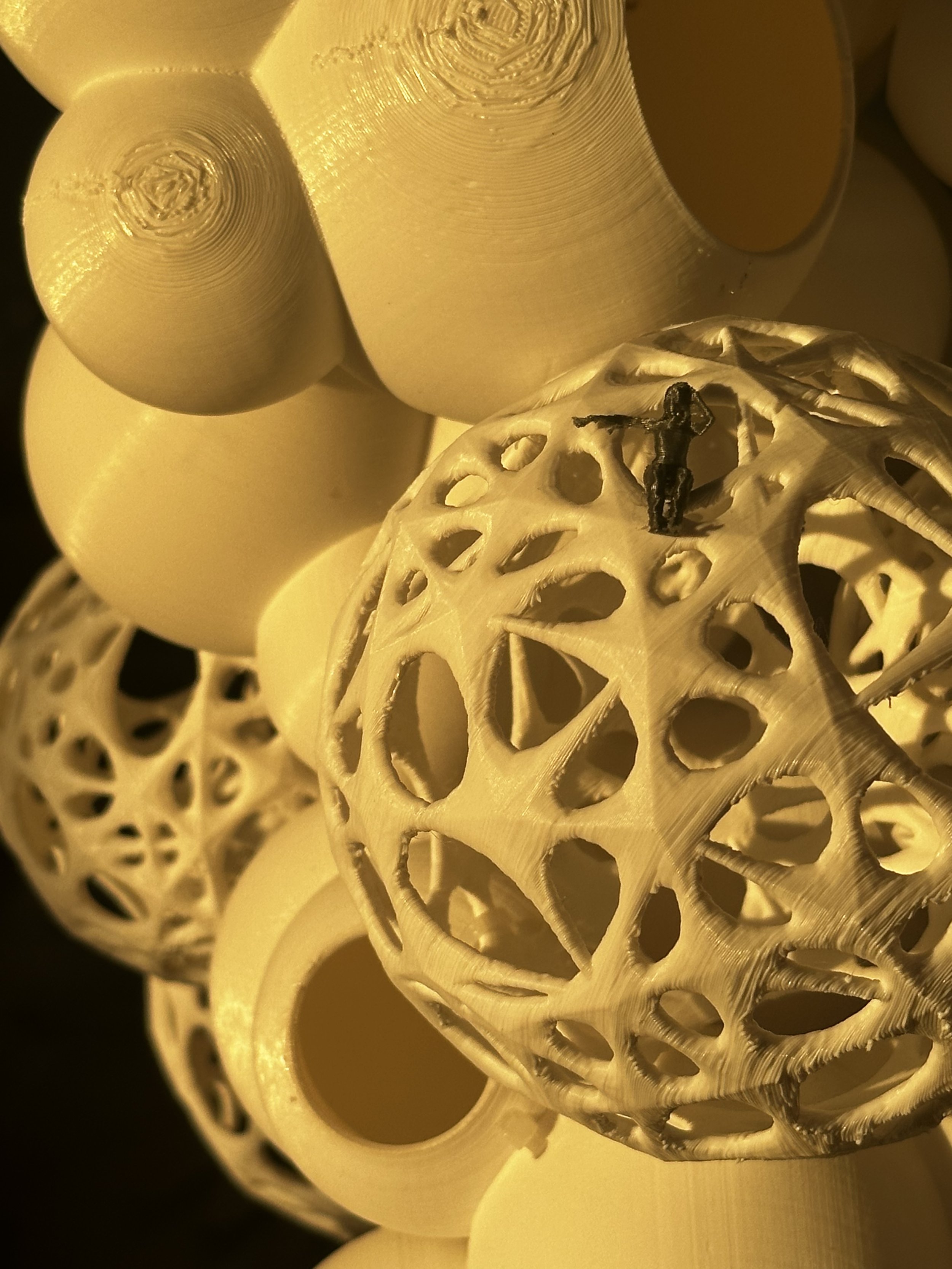Team Project: Mason Chen & Negar Hosseini
Because of global warming and water pollution, California will be facing a massive water shortage and drought. Since many of the water resources will be expended 100 years from now, this project is trying to respond and suggest a solution for producing water naturally. Karl and air humidity have provided a unique opportunity to build water collectors on the bay bridge. The collectors will gather water and use gravity and wind turbines to deliver it to storage units, habitats, and farms. This has resulted in the creation of a self-sustaining and harmonious system where humans and technology collaborate for survival.
In the future, California will be facing many challenges, including drought and freshwater shortage. One hundred years from now, freshwater resources will be extremely limited. Water will become one of the state’s most valuable commodities. Aqua-Haven explores ways to harvest water from the environment, including fog and humidity. Moisture collectors will gather water and utilize power from wind turbines to deliver it to storage pods, habitats, lotus farms, and thermal baths. The result will be a self-sustaining and harmonious system where humans and technology collaborate for survival and leisure.
Aqua-Haven
Story
California has been facing a severe water crisis for years, with frequent droughts and limited water resources. Also, global warming and water pollution have led to water shortages and agricultural losses.
The Bay Area is just one example of how this crisis impacts humans’ survival worldwide, while it has started to turn into a desert already.
It is the year 2083. Water has become a universal currency, and drinkable water is no longer available for all humans to survive. There are only some safe zones here in the bay area called “Aqua Zones” where we can access drinkable water.
My name is Triton. In the last ten years, I have been dreaming of a solution to produce water. Based on the information I have, global warming and climate changes have led to water evaporation increase which has resulted in not only extra salty water but also increased air humidity.
*Triton in the foreground imagining his utopia
A bug called “Namib Beetle” harvests water drops with its wing cases from thin air to drink. His skin has a texture allowing him to catch the moisture from the air. So, what if we can design a water collector inspired by this beetle’s skin texture…! It is possible here to collect water from the fog and the over-hydrated air around the bay bridge…
*Add a girl in all the slides with a speech box and ask herself about what she sees.
The plan is, in the first 20 years, many workers will start training robotic arms to start building Aqua-Haven and learn how to continue expanding it in the future. Based on the design, since water is the key to humans’ survival, moisture collectors and storage pods will be built first. After that, the habitats will be constructed so pioneers can be occupied there and have access to sweet, pure, and freshwater. Then, wind turbines will be added to provide sustainable energy for transferring water and habitats. And finally, thermal baths will be built to produce food and remind pioneers of the feeling of swimming.
Everything is drawn in detail to see the relationships between the spaces and also the relationship between the systems (Pause). From the top of the truss, pipes transfer the water accumulated with the water collectors to the storage pods, habitats, and thermal baths). Then in the habitats, all interior spaces are connected internally, and it helps the pioneers to move inside the structure easily and access everywhere.
Also, since thermal baths need warm water in them, some wind turbines are provided close to them as well to generate energy and keep them warm naturally
So, about the food, Lotus is the plant that is going to sustain the pioneers. This wonderful plant can grow in almost any water quality. It means we could have food almost everywhere in the system.
One of the goals of Aqua Haven is to trade water cells to the parts of the planet where water is lost. Basically, the water collected from the moisture will be transferred to the storage pods, which could be moved anywhere by drones and will be back to fill again for another mission.
Grandchild: Grandma! Guess what! You won’t believe what I had in my dream last night…
I was in a self-sustained, suspended city under the bay bridge. Many robots were constructed to produce drinkable water because no water was left for humans to survive. They were collecting moisture from humidity and fog to feed this whole system! Can you believe that!!!
Grandma: Oh honey, it was just a dream.
But I am sure it was not just a dream.
